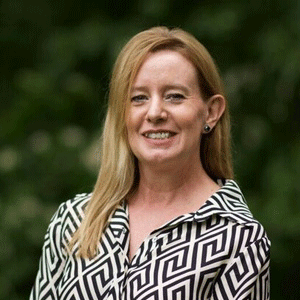THANK YOU FOR SUBSCRIBING

Ginny Davis, CIO/CSO, Technicolor
The changing role of collaboration in the media and entertainment industry
For many years we have had rigid notions about what it means to have an enterprise-wide collaboration strategy. This has been true for industry in general, but for the media and entertainment sector in particular. It is the natural legacy of IT-oriented offerings that for decades revolved around unified communications solutions that were designed to integrate connectivity by bringing our phones, email, conference calls, video session and more under a single vendor’s banner.
This approach represented the state of the art from the industry for a long time. However things have changed. Key developments in technology have converged with disruptive market dynamics and end user expectations to render this approach moot.
Between the rise of an array of cloud-collaboration offerings, consumerization of IT, the growing prevalence of Bring Your Own Device (BYOD) strategies, as well as new competitive requirements to adjust as conditions constantly change, a more flexible and responsive enterprise collaboration strategy is needed; one that is designed around how people work together, rather than around how IT provisions technology.
The link between collaboration and innovation
There is not an industry in the world that can afford to be complacent in today's global digital economy. This is why we have heard so many industry pundits talk about the importance of innovation.
In the entertainment and media technology arena, developing new ways of delivering multimedia experiences is an existential imperative. It is the only way we are going to meet and exceed consumer expectations every time a new movie comes out,a new game is brought to market, or a new device is introduced that changes how content can be consumed.
One of the ways that Technicolor has been able to stay in this sector for 100 years is by recognizing the incredibly important link between collaboration and innovation.
In this context collaboration comes in two major flavors:
* Internal collaboration among our artists, scientists and business people (who create and then bring our innovations to market). * External collaboration with our extremely complex value-chain -which includes creative types (such as movie directors and game developers), content owners (such as studios, streaming services, and broadcasters), as well as manufacturers (TVs, cell phones, tablets, etc.) and our critical supply chain partners to highlight just a few of the partners playing a critical role in harvesting Technicolor's value-proposition.So what do these players share in common, from a collaboration perspective?
The answer, often, is not much. The way artists interact and collaborate is completely different form the way our scientists work together on their research projects, or the way our marketing and sales teams coordinate to bring our offerings to market.
"In the entertainment and media technology arena, developing new ways of delivering multimedia experiences is an existential imperative"
This diversity gets even more complex as we look for ways to integrate our ecosystem of partners each of which has an equally complex community of collaborators in their own organizations with whom Technicolor must work.
It would be impossible to effectively accommodate the different styles of communication and coordination if we were to implement a single solution, or adopt a rigid strategy for enterprise wide collaboration.
Collaboration-driven transformation
This is something that became very clear to us in the late 2000s’ as Technicolor embarked on a dramatic transformation strategy that would make the company a leader in the digital entertainment economy. The shift required our IT organization to undergo its own makeover. We had to evolve from being tactical ‘Order Takers’ to becoming much more strategic ‘Brokers of Services’ who anticipate needs and then match the best available capabilities to meet the key priorities and objectives of our organization.
Standardizing on a single set of unified communication and collaboration (UCC) tools may have provided a foundation for company wide connectivity, but it was not going to unleash the high-speed creativity that we needed in order for Technicolor to anticipate and then drive the expectations of demanding consumers around the world.
This realization, however, ran counter to conventional IT management philosophies.
Traditionally, IT shops have looked for ways to create common tools that eliminate redundancies and limit the variables for managing cost as well as risk. To be clear, there is nothing wrong with this thinking, unless we become too dogmatic in our implementation.
Without the proper perspective, we run the real risk of designing our technology investments around the process requirements of implementation, rather than keeping the needs of our end users and desired business outcomes at the forefront of our decisions.
At Technicolor we started our collaboration focused transformation initiative by identifying the critical categories of collaboration that needed to be supported, and then we worked our way backward to the types of solutions which could support those desires and requirements. The good news was that, often,each discrete end-user community had a fairly clear idea of how they wanted to collaborate to achieve their innovation objectives. We just had to listen and pay attention.
In some cases, traditional UCC solutions worked fine. In other cases, there were tools on the web that our end-users wanted to apply to their projects, or that they needed to utilize when they were interacting with key partners.
Over the past few years, the rise of new cloud-based applications has collided with BYOD practices to expose our employees (including senior executives and our rank and file) to new solutions that they can rapidly implement.
Since we have a creative and innovative workforce, our employees tend to jump on many of these new opportunities. If my teams in the IT and security departments were to take a rigid line when these issues come up, we were acutely aware of two things we would simply be bypassed, and the demand would still be met by a growing ’shadow IT’ underground technology culture that would expose us to unnecessary cost and risk.
What we have elected to do instead is to avoid being the IT Department of ‘No’. We have made it very clear that we are open to having our employees use new tools as long as they involve us in the process so that we can put the governance structure around it to protect our processes and more importantly our intellectual property. We have also taken a page from the commercial cloud industry, and worked to proactively make our user communities aware of new technologies and services that they may find interesting as they collaborate.
What are we optimizing?
Developing this mindset required us to develop an IT culture that is willing to be flexible without compromising on our commitment to strong governance and risk management controls -allowing our partners to do their jobs effectively while ensuring that new technologies are deployed in a managed fashion.
From an IT management perspective, this flexible approach may not be the most efficient way to run a technology department. But we realize that we are not just managing to streamline IT performance. We are managing to optimize shareholder value. Or, as I like to put it, realize that Orange really is the new Black.
See More: Top Collaboration Technology Companies in APACWeekly Brief
I agree We use cookies on this website to enhance your user experience. By clicking any link on this page you are giving your consent for us to set cookies. More info
Read Also
Artificial Intelligence - Myths And Truths
Sustainable Future through Innovative Technology Solutions
The Future Relies on Augmented AI
Digitalization with the use of digital technologies/Improving business through digital technologies
How Marco's Pizza Leaned On Technology To Succeed Amid The Pandemic By Quickly Pivoting To Contact-Free Delivery And Curbside Carryout
Bunnings Diy Digital Transformation
For a Smarter City: Trust the Data, Ignore the Hype
Smart Community Innovation for the Post Pandemic






















